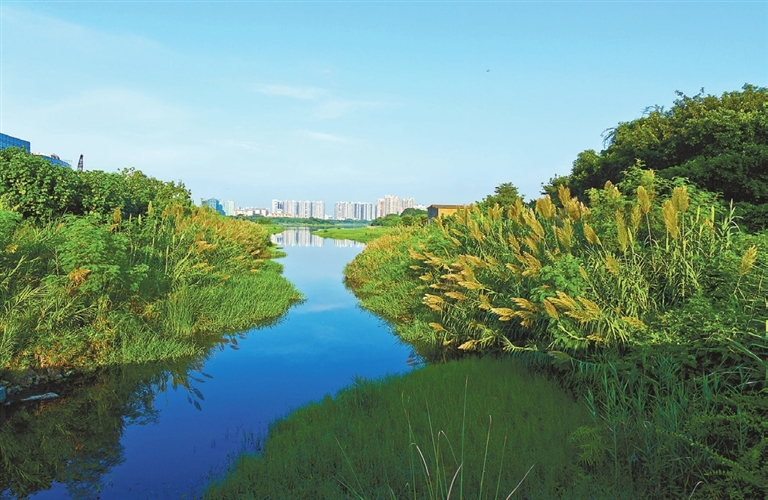
FIFTEEN years ago, an abandoned land plot located southeast of the Window of the World theme park in Overseas Chinese Town (OCT) was a stinky mudflat, with severely polluted lakes and plants. Last Wednesday, this revitalized land which is now the OCT National Wetland Park was awarded the Star Wetland Center recognition by Wetland Link International for its contributions in wetland protection and nature education. The award was announced at the Ramsar CEPA for Wetland Conservation Forum, a themed parallel session of the 14th Meeting of the Conference of the Contracting Parties to the Ramsar Convention on Wetlands (COP14) in Wuhan, Central China’s Hubei Province. The 685,000-square-meter OCT National Wetland Park is home to a 50,000-square-meter forest of mangroves, and 800 species of plants and animals, attracting tens of thousands of migratory birds to gather here every year. In2007, OCT Group, a State-owned enterprise engaged in cross-industry operations, was entrusted by the city government to manage the area, and has since been implementing protective restoration and sustainable enhancement programs. The company utilized underwater sludge to create artificial shores for more birds to habitat; ecological floating beds were added for decontamination of eutrophic water bodies; weed barrier cloth was placed to control invasive plants; and ditches have been dug to allow fish to migrate freely. Due to the low hydrodynamic force in the wetland and soil compaction, timed water pumps were installed to irrigate the mangroves. Now that in the park’s 50-hectare water area, the wetland ecological system has been stabilized and is experiencing increasing numbers of biological species, the park has become a paradise for wetland animals and serves as a humans’ biological museum. In 2014, a nature school was established in the park, which holds regular activities to educate the public about wetland natural resources. The school fosters the concept of environmental protection in the public and helps children get close to nature through hands-on practices and outdoor events, developing their ability to explore and participate in wetland protection. In 2016, the OCT Group worked with the East Lake scenic area in Wuhan to restore its wetland system, creating a coexisting system containing algae-eating insects, underwater forests, aquatic animals and birds. Boasting clear water and flocks of waterfowl, the lake is now a popular jogging and sightseeing site for many residents, attracting more than 12,000 visitors on a daily basis during holidays. In addition to Shenzhen and Wuhan, the OCT Group has also been engaged in preserving wetlands in other cities, including Shunde, Xiangyang and Nanchang, to improve biodiversity, and has been turning these natural lands into getaways for the public to get close to nature. Public education programs have also been launched in Haikou and counties in Guizhou, Sichuan and Inner Mongolia. China has been highlighting the harmony between humanity and nature on its path to modernization. Since 1992 when the country became a party to the Ramsar Convention, China has established a legal framework for wetlands conservation and issued a series of policies to increase protection. Over the past decade, China has added or restored more than 800,000 hectares of wetlands, according to the National Forestry and Grassland Administration. The country unveiled new ambitions for wetlands conservation during the COP14. (Cao Zhen) | 
